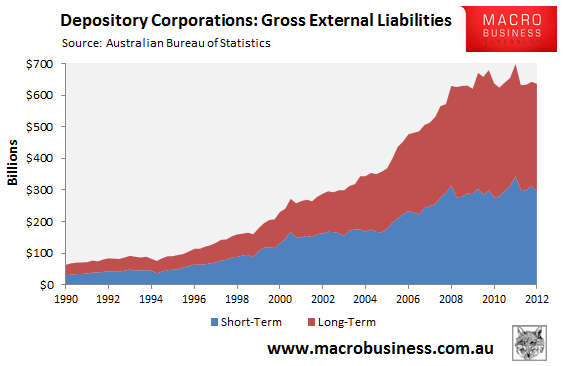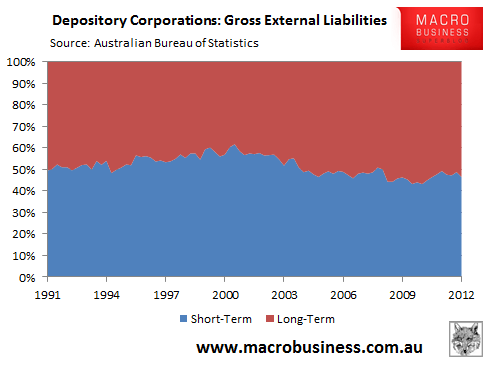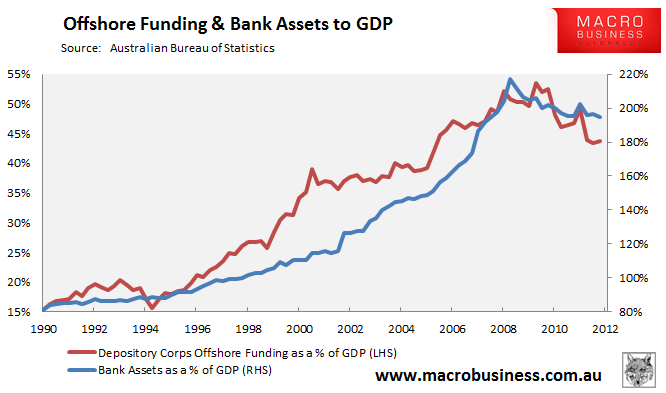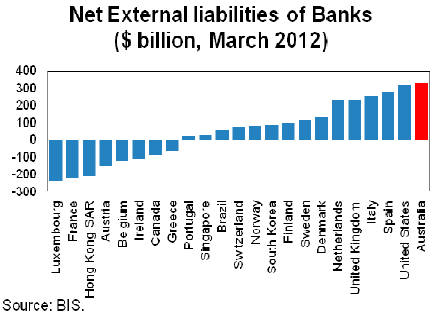
One positive side effect from near record low levels of private credit growth is that it has reduced the banks’ need to seek funding from offshore credit markets.
The release yesterday of the quarterly balance of payments data by the Australian Bureau of Statistics (ABS) revealed that gross external liabilities held by depository corporations (mostly banks, but also building societies, credit unions, and registered finance corporations) fell by -$6.1 billion over the September quarter of 2012 to $636.2 billion, and is now -$62.4 billion below the peak level of $698.7 billion reached in September 2011 (see below chart)

The proportion of gross external liabilities that are short-term – that is, with a term-to-maturity of less than 12 months – also declined to 46% from 49% in the previous quarter, and in now well below the peak levels recorded in March 2001, when 62% of offshore funding was short-term (see below chart). This is good news from a financial stability perspective, since it reduces the risk of the banks experiencing difficulties in rolling-over their debts in the event that offshore capital markets freeze, as they did during the Global Financial Crisis (GFC).

When compared to Australia’s GDP, depository corporation offshore borrowings rose from only 11 of GDP in 1988 to a peak of 53% of GDP in December 2009, before settling back at 44% of GDP as at June 2012 (September’s GDP will be released later today). Over the same period, total bank assets grew from 70% of GDP in 1988 to a peak of 207% of GDP in June 2009, before falling back to 195% of GDP as at June 2012 (see below chart).

It is fair to say that Australia’s banks would never have experienced anywhere near the degree of asset (loan) growth without this access to offshore funding markets. By extension, with the ratings agencies continually warning the banks against increasing their external liabilities, it also means that the banks could become credit constrained should loan demand increase and/or deposit growth fall.
While the banks’ external liabilities are now at safer levels than existed in the wake of the GFC, they remain at high levels overall, as is illustrated by the below chart from the International Monetary Fund (IMF):

As a result, the banks remain at risk of a sudden liquidity shock, which would likely trigger a renewed guarantee of bank wholesale funding and deposits by the Australian Government, in addition to substantial liquidity support from the RBA.
Twitter: Leith van Onselen. Leith is the Chief Economist of Macro Investor, Australia’s independent investment newsletter covering trades, stocks, property and yield. Click for a free 21 day trial.

